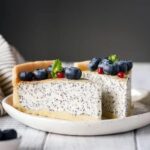Have you ever found yourself in need of a cake for an upcoming event and realized that you’ve got a frozen cake in storage? If so, then you understand the importance of knowing how to properly thaw a frozen cake for decorating. Whether you’re preparing for a special occasion or simply enjoy baking and decorating cakes, understanding the proper techniques for thawing a frozen cake is crucial for achieving the best results.
When it comes to thawing a frozen cake, there are several methods that can be used to ensure that the cake maintains its moisture, texture, and overall quality. From slowly thawing in the refrigerator to using a microwave for a quicker method, each approach comes with its own set of considerations. By following the right steps, you can prepare the cake for decoration without compromising its flavor or structure.
In this article, we will explore step-by-step instructions on how to properly wrap and freeze a cake for optimal results, as well as different methods for thawing the cake. Furthermore, we will provide tips and tricks for successful cake decorating on a thawed cake.
By understanding these important techniques, you can ultimately achieve a delightful end result when decorating your thawed cake. So, let’s get started by diving into the importance of properly thawing a frozen cake for decorating success.
Step 1
Properly preparing and freezing a cake is essential for successful decorating. When it comes to thawing a frozen cake, the process can significantly impact the texture and moisture of the final product. In this section, we will discuss how to properly wrap and freeze a cake to ensure optimal results when it comes time for decorating.
First, it is crucial to let the cake cool completely before wrapping and freezing it. Once cooled, carefully wrap the cake in plastic wrap, ensuring that it is tightly sealed to prevent any air from getting in. After the plastic wrap, cover the cake with aluminum foil for an extra layer of protection against freezer burn.
When storing the wrapped cake in the freezer, make sure to place it on a flat surface to maintain its shape. Avoid placing heavy items on top of the cake, as this could cause it to become misshapen. For added protection, consider placing the wrapped cake in an airtight container or resealable plastic bag before putting it in the freezer.
Properly wrapping and freezing a cake ensures that it retains its moisture and texture when thawed for decorating. By following these steps, you can be confident that your thawed cake will be in prime condition for adding that perfect finishing touch.
| Wrapping Process | Freezing Process |
|---|---|
| Wrap in plastic wrap | Place on flat surface |
| Cover with aluminum foil | Avoid heavy items on top |
Step 2
Thawing a frozen cake in the refrigerator is a crucial step in ensuring that the cake maintains its moisture and texture, which are essential for successful decorating. By following the proper thawing process, you can avoid the risk of a soggy or dry cake, and instead, create a perfect canvas for your decorating endeavors.
Proper Thawing Process
To thaw a frozen cake in the refrigerator, it’s important to remove the cake from the freezer and place it on a flat surface in its original wrapping or an airtight container. This will help prevent any condensation from forming on the cake as it thaws. Place the wrapped cake in the refrigerator and allow it to thaw slowly for several hours or overnight, depending on the size of the cake.
Maintaining Moisture and Texture
Thawing the cake in the refrigerator allows for a slow and gradual thawing process, which helps maintain the moisture and texture of the cake. This method also reduces the risk of any sudden changes in temperature that could potentially affect the quality of the cake. As the cake thaws, it absorbs any moisture that forms within its packaging, resulting in a perfectly moist and tender texture that is ideal for decorating.
Benefits of Refrigerator Thawing
Refrigerator thawing is often considered one of the best methods for thawing a frozen cake for decorating due to its ability to preserve moisture and texture. It allows for a controlled thawing process that minimizes any potential damage to the cake while ensuring that it retains its delicious flavor and structure. Additionally, this method provides ample time for any potential issues or concerns with the cake to be identified before decorating begins.
Step 3
Thawing a cake at room temperature can be a quicker method compared to using the refrigerator, but it still requires careful attention to ensure that the cake maintains its moisture and texture. This step-by-step guide will walk you through the process of safely and effectively thawing a frozen cake at room temperature for successful decorating.
Proper Set-Up for Room Temperature Thawing
Before beginning the thawing process, it’s important to set up a suitable environment for the cake. Choose a clean, cool, and dry area away from direct sunlight or heat sources. Placing the cake on a wire rack can help to promote even airflow around the cake, aiding in the thawing process.
Monitoring and Timeframe
When thawing a cake at room temperature, it’s crucial to monitor the process carefully to prevent any spoilage or loss of moisture. Depending on the size and type of your cake, it may take anywhere from 2 to 6 hours to fully thaw at room temperature. Check on the cake periodically and touch the surface lightly with your finger – if it springs back gently, it’s ready for decorating.
Additional Considerations
It’s important to note that certain types of cakes with delicate fillings or frostings may not be suitable for room temperature thawing due to potential melting or oozing. Always refer to specific instructions provided by your recipe or bakery when deciding on the best method for thawing your frozen cake for decorating.
Step 4
Thawing a frozen cake in the microwave can be a quick and convenient method, but it should be done with caution to ensure that the cake maintains its texture and moisture. Here are some steps to properly thaw a frozen cake using a microwave:
- Before placing the cake in the microwave, remove any decorative elements or packaging such as plastic wraps or skewers.
- Place the frozen cake on a microwave-safe plate and set the microwave on low power or use the defrost setting to avoid cooking the cake.
- Check the cake every 1-2 minutes and rotate it to ensure even thawing. Be sure to avoid overheating the cake, which can lead to dryness or uneven texture.
It’s important to note that while using a microwave can expedite the thawing process, there is a risk of uneven thawing or even partial cooking if not done carefully. Therefore, it is crucial to monitor the process closely and take extra care to prevent any damage to the cake.
Ultimately, using a microwave for thawing a frozen cake for decorating should be done as a last resort when time is limited. It’s always best to opt for slower thawing methods such as refrigeration or room temperature, as they maintain the integrity of the cake better and result in superior texture.
Step 5
Once your cake has been properly thawed, it is important to inspect it for any potential issues or concerns before proceeding with the decorating process. This step is crucial in ensuring that your final product will be of high quality and visually appealing.
The first thing to look for when inspecting a thawed cake is any signs of freezer burn. Freezer burn can occur when the cake is not properly wrapped before freezing, causing moisture loss and potentially affecting the texture and taste of the cake. Look for any discolored or dry areas on the surface of the cake, as this may indicate freezer burn. If you notice any of these signs, consider carefully trimming off those areas before decorating.
Another important aspect to check during the inspection is the overall texture and moisture of the cake. A properly thawed cake should maintain its moisture and softness, which are essential for successful decorating. Use a gentle touch to press on the surface of the cake and ensure that it has retained its desired texture. If the cake feels overly dry or dense in certain areas, consider applying a simple syrup or flavored liquid to help rehydrate it before decorating.
During this inspection process, also take note of any structural damage that may have occurred during freezing or thawing. Cracked or crumbled sections could impact the stability of your decorated cake, so it’s important to address these issues before moving forward with your designs.
Ultimately, taking the time to thoroughly inspect your thawed cake for potential issues will contribute to a smoother decorating process and a more delicious end result for you and your guests.
| Aspect | Action |
|---|---|
| Freezer burn | Check for discolored or dry areas; trim if necessary |
| Texture and Moisture | Press gently to check for retained moisture; apply syrup if needed |
| Structural Damage | Check for cracks or crumbling; address before decorating |
Tips and Tricks for Successful Cake Decorating on a Thawed Cake
Successfully decorating a thawed cake requires a delicate balance of preparation, technique, and creativity. Here are some helpful tips and tricks to ensure that your thawed cake is ready for decorating:
- Start with a clean, level surface: Before beginning the decorating process, make sure that the cake is placed on a sturdy, level surface. This will provide stability and create an even canvas for your decorating efforts.
- Use a crumb coat: Applying a thin layer of frosting or icing to the entire cake before adding more decorative elements can help prevent crumbs from mixing into the final layer of frosting. This initial coat acts as a sealant, creating a smooth base for your decorations.
- Experiment with different piping techniques: Whether you’re using buttercream, royal icing, or fondant, experimenting with different piping techniques can add depth and dimension to your cake decorations. Try using different tips and techniques to create intricate designs and textures.
- Add embellishments strategically: When adding decorative embellishments such as edible flowers, sprinkles, or candies, consider placement and quantity carefully. It’s important to strike a balance between visual appeal and maintaining the structural integrity of the cake.
- Allow time for setting: Once you’ve completed the decorating process, allow the cake to set in a cool, dry place before serving. This will give the frosting or icing time to firm up and set properly.
By utilizing these tips and tricks, you can elevate your cake decorating skills and achieve stunning results on a thawed cake. With proper preparation and technique, you’ll be able to create visually stunning and delicious treats for any occasion.
Conclusion
In conclusion, properly thawing a frozen cake for decorating is crucial in achieving a delightful end result. By following the steps outlined in this article, you can ensure that your cake maintains its moisture and texture, making it the perfect canvas for your decorating endeavors.
Whether you choose to thaw the cake in the refrigerator for a slower, more controlled process, or at room temperature for a quicker method, it’s important to be mindful of the potential issues that may arise during the thawing process.
Additionally, using a microwave for expedited thawing should be approached with caution to prevent any undesirable outcomes. Once the cake is fully thawed, it’s essential to inspect it for any potential issues or concerns before moving on to the decorating phase. By keeping these tips and tricks in mind, you can set yourself up for success when it comes to decorating a thawed cake.
Overall, understanding and implementing proper thawing techniques are key in ensuring that your cake is at its best for decorating. Whether you’re a professional baker or a home enthusiast, taking the time to properly thaw your frozen cake will ultimately lead to a more successful and visually appealing end result. So next time you have a frozen cake ready for decoration, remember these steps on how to properly thaw it and set yourself up for decorating success.
Frequently Asked Questions
How Do You Defrost a Cake Before Frosting?
To defrost a cake before frosting, the best method is to transfer the cake from the freezer to the refrigerator. Allow it to thaw slowly for several hours or overnight. Once completely thawed, you can proceed with frosting.
How Do You Defrost a Cake Without It Getting Soggy?
Defrosting a cake without it getting soggy requires patience and gentle handling. Start by transferring the frozen cake from the freezer to the refrigerator. Let it thaw slowly for several hours or overnight. Avoid exposing it to direct heat or moisture, which can lead to sogginess.
How Do You Decorate a Cake That Has Been Frozen?
Decorating a cake that has been frozen is possible with a few considerations. Once the frozen cake has been properly thawed, it’s essential to remove any excess moisture or condensation before decorating.
This can be achieved by gently patting the surface with a paper towel before adding frosting or decorations. Additionally, allowing the cake to come to room temperature will make it easier to work with when applying decorative elements such as piping icing or fondant details.

Welcome to my blog about home and family. This blog is a place where I will share my thoughts, ideas, and experiences related to these important topics. I am a stay-at-home mom with two young children. I hope you enjoy reading it! and may find some helpful tips and ideas that will make your home and family life even better!





